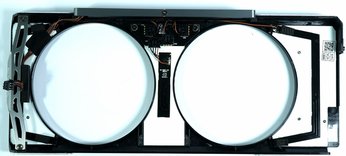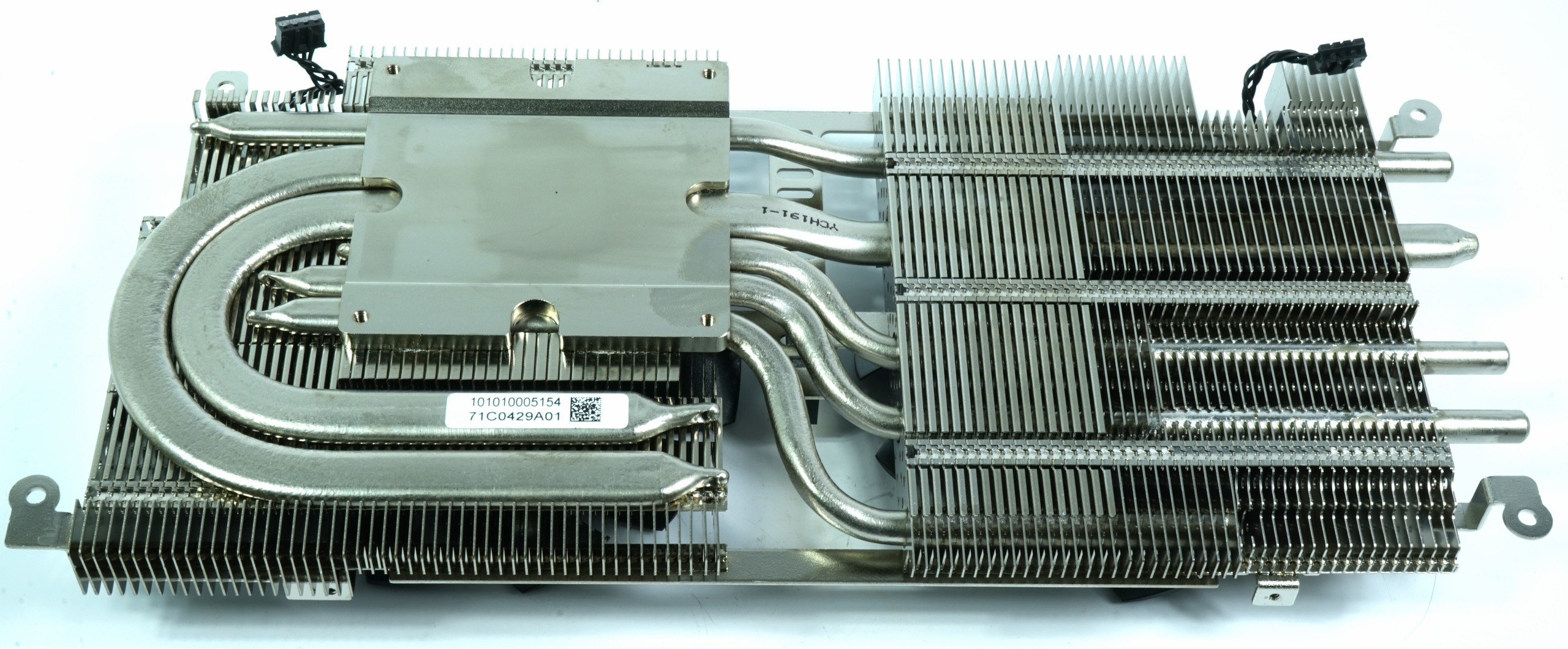Testing EVGA's GeForce GTX 1080 FTW2 With New iCX Cooler
Does a new heat sink translate to new success? EVGA complements its existing technology with some on-board sensors and gives enthusiasts access to asynchronous fan control.
Cooler Design And Technical Implementation
Sensors in abundance
Based on our close examination of graphics card circuit board layout, we know that the usual tools only read the GPU diode’s temperature. You’ll sometimes see a reading for VRM or VRM2, but that’s simply the PWM controller’s temperature. EVGA wants to prove it can provide a much more thorough picture of thermal performance, though.
On its slightly modified board, the company places a total of nine thermal sensors in locations where hot-spots may occur. The measured values can be displayed and also logged by EVGA’s Precision Software. Truly, hardcore control freaks have to love that amount of information provided in real-time. It might even be too much goodness, though. After all, worrisome hot-spots only really occur in two places on the cards we’ve dissected.
Be that as it may, this functionality serves as the foundation for a first for EVGA: asynchronous fan control based on real measured data, enabling separate curves for each of the two fans.
The assignment of sensors to the corresponding fans seems a little illogical, though. The RAM sits almost entirely under the left fan. According to EVGA’s slide deck, however, the readings from those sensors are supposed to affect the right fan, which is above the voltage regulator.
This bears out in practice. The actual hot-spot is observed on memory module M7 (the same place we found on the GTX 1080 FTW, incidentally). After removing the backplate, the right fan turns faster because the RAM is hotter than the VRM. We have already informed EVGA about this behavior.
EVGA developed on a very effective solution to capture sensor values in near-real-time using Sonix’s eight-bit flash-type microcontroller.


In addition to the sensors directly next to the MOSFETs in the above-right picture, sensors are also found below the GPU package (bottom-left) and near the memory modules (bottom-right).
Get Tom's Hardware's best news and in-depth reviews, straight to your inbox.


All of the data generated by these sensors can only be read by EVGA’s proprietary software, not surprisingly.
The Cooler: An Old Friend Made New
Before diving into our measurements, we wanted to disassemble the cooler. Although EVGA permits removing its thermal solution without voiding the card’s warranty, you have to use the right tool. As with the ACX cooler, iCX is based on the well-known sandwich principle, whereby a heat sink above the circuit board cools the memory modules and voltage regulator. In turn, this sink holds the large fins and contributes to the assembly’s stability.
Certain parts of the cooling and mounting plate are peppered with small pins that protrude and increase the surface area. We’re a little skeptical of this approach’s usefulness; surely grooves would have been more effective.
The complete heat sink, which carries the fan modules, the fan shroud, and the LED backlighting, is then placed on this plate.


A nickel-plated heat sink on the GPU transfers waste heat to a short and a continuous two 8mm heat pipes, as well as to four 6mm pipes.
The vertically-oriented fins are bent in an I-shape, which EVGA says improves cooling performance. Frankly, we would have liked to see a larger radiator with integrated sinks to draw heat away from the memory, VRMs, and coils instead of the new sandwich solution.
Current page: Cooler Design And Technical Implementation
Prev Page EVGA GeForce GTX 1080 FTW2 With iCX Next Page Power Consumption And Cooling Performance
Igor Wallossek wrote a wide variety of hardware articles for Tom's Hardware, with a strong focus on technical analysis and in-depth reviews. His contributions have spanned a broad spectrum of PC components, including GPUs, CPUs, workstations, and PC builds. His insightful articles provide readers with detailed knowledge to make informed decisions in the ever-evolving tech landscape






